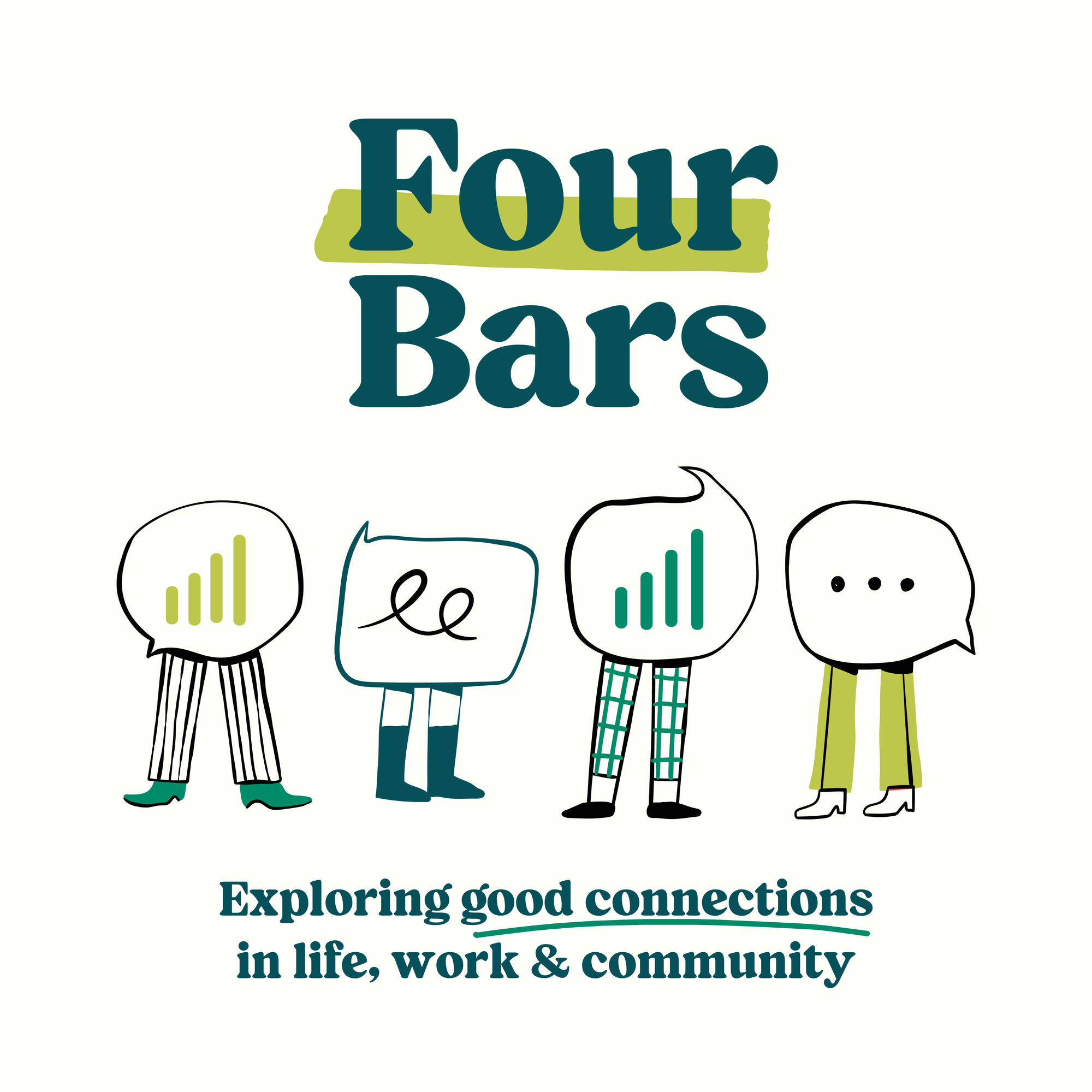Have you ever experienced that moment of frustration when someone isn't approaching a task "the right way" – meaning your way? That universal feeling stands at the heart of disconnection in our relationships, and it's exactly what we tackle in this enlightening episode.
Ken and Patti take us behind the scenes of their growth advisory firm Edges and reveal the origin story of their behavioral assessment tool, Interface Methods. Unlike psychological assessments that identify relatively fixed traits, Interface Methods focuses on three key behavioral differences that can be adapted: detail orientation, idea processing, and influencing style. These differences affect every interaction we have, whether with colleagues, clients, or even spouses.
We share fascinating real-world examples that will have you nodding in recognition – from the infamous "dishwasher stacking debates" that plague many relationships to the surprising case of a CFO whose seemingly disorganized filing system was actually perfect for his cognitive style. What makes these stories so powerful is how they illuminate the judgment that underlies most disconnection: "You're not doing it right."
Organizations using Interface Methods for team building and onboarding report seeing team integration accelerate by 60-65% compared to traditional methods. Why? Because when team members understand each other's natural preferences – whether they're "Evergreens" who thrive on structure and detailed execution or "Changing Leaves" who focus on big-picture outcomes – they can adapt their communication styles accordingly rather than expecting everyone to work like they do.
The beauty of this approach lies in its practicality. Once you recognize these behavioral patterns, you can leverage differences as strengths rather than sources of conflict. This episode offers concrete strategies for improving connections in every area of your life – from professional teams to personal relationships.
Try spotting these behavioral differences in your next interaction. Notice if someone prefers details or big-picture thinking. Then adapt your approach accordingly and watch how quickly your connection strengthens. Share your experiences with us at fourbarspodcast.com, where we're building a community dedicated to meaningful connection.
Follow and stay connected:
Website: fourbarspodcast.com
YouTube: youtube.com/@FourBarsPodcast
Instagram: @edges_Inc
Facebook: EDGES Inc.
LinkedIn: EDGES Inc.
Never miss an update—follow, subscribe, and join the conversation!
More About this Episode
Building Better Connections: How Understanding Behavioral Differences Can Transform Work and Life
In the fast-paced, hyper-connected world we live in, building meaningful connections can feel like a challenge. Whether it’s with coworkers, family, friends, or even ourselves, understanding how we connect and communicate can significantly impact our relationships and professional success. That’s where behavioral insights come in. At Edges Inc., we’ve developed a tool called Interface Methods, designed to help teams and individuals understand their behavioral tendencies and learn how to adapt for better collaboration and connection.
In this article, we’ll explore how recognizing and adapting to behavioral differences can improve relationships at work and in life. We’ll also dive into how the Interface Methods tool helps businesses grow by fostering stronger, more effective communication.
Why Behavioral Differences Matter
At the core of human interaction lies a fundamental truth: we all think and process differently. Whether you’re running a business, working on a team, or simply trying to connect with your partner at home, understanding these differences is key to building lasting and effective relationships.
The Interface Methods tool, developed by Edges Inc., addresses this by categorizing behavioral tendencies into three key areas:
- Detail Orientation: How much structure and detail do we need?
- Idea Processing: Do we think out loud or internally?
- Influence Style: Are we more direct or diplomatic when persuading others?
In this episode of the Four Bars Podcast, Ken and Patti Leith discuss the significance of these behavioral differences and how they impact both personal and professional relationships.
Understanding Detail Orientation: Evergreens vs. Changing Leaves
One of the most significant differences between people lies in how they process details. In the Interface Methods model, people are categorized as either:
- Evergreens: Highly structured, detail-oriented, and process-focused.
- Changing Leaves: Big-picture thinkers, adaptable, and more strategic.
Evergreens thrive on structure. They organize, categorize, and plan with precision, which helps them maintain order and efficiency. Whether it’s stacking a dishwasher correctly or meticulously organizing a pantry, they find comfort in consistency.
Changing Leaves, on the other hand, are spontaneous and visionary. They focus on goals and outcomes, often preferring to brainstorm rather than follow strict processes. They’re comfortable with ambiguity and are energized by creativity.
Real-Life Example: The Dishwasher Debate
One couple shared a humorous yet insightful story about their different approaches to stacking the dishwasher. The wife, an Evergreen, carefully aligned every dish and utensil, while her Changing Leaf husband would throw items in without much thought. Though trivial on the surface, this clash of preferences highlights a common dynamic where structure meets spontaneity.
By recognizing their differences, they learned to laugh rather than argue, creating a shared understanding that deepened their connection.
Balancing Work Teams: The Power of Complementary Skills
In professional settings, these differences can have even more significant consequences. Teams composed entirely of Evergreens might execute flawlessly but lack innovation. Conversely, a group of Changing Leaves might generate brilliant ideas without ever fully implementing them.
Ken and Patti shared a story about a company where the CEO was a Changing Leaf and the COO was an Evergreen. Initially, their contrasting approaches created friction. The CEO’s visionary thinking felt unfocused to the COO, while the COO’s structured planning seemed restrictive to the CEO. However, once they embraced their differences and saw them as complementary rather than conflicting, the company thrived. The CEO could innovate freely, knowing the COO would ground ideas in practical execution.
This story illustrates how diverse behavioral styles can strengthen a business when managed effectively. Instead of pushing for uniformity, leaders should embrace the dynamic tension between structure and creativity.
Why Adaptation is Essential for Growth
One of the biggest misconceptions is that behavioral styles equate to ability. In reality, being detail-oriented or big-picture-focused doesn’t make one better or worse; it’s simply a difference in processing. This is crucial for leaders and team members to understand.
The Interface Methods tool doesn’t label anyone as “better” or “worse” but rather identifies preferences. This insight allows teams to adjust their communication styles, making sure that big-picture thinkers aren’t stifled by excessive detail, while detail-oriented individuals aren’t overwhelmed by vague ideas.
Personal Example: The Balanced Connector
Ken, who falls right in the middle of the spectrum between Evergreen and Changing Leaf, shared his experience as a “Connector.” In his corporate role, he found that his ability to shift between structured thinking and visionary planning often confused his team. After understanding his balanced preference through the Interface Methods tool, he made a conscious effort to explain his thought process, fostering trust and clarity among his colleagues.
This simple change empowered his team to make more confident decisions, ultimately boosting productivity and morale.
Applying Behavioral Insights in Real Life
The beauty of understanding these differences is that it doesn’t just apply to the workplace. Imagine being able to adapt your communication style based on whether a friend or partner needs detailed plans or prefers spontaneous adventures. By not taking differences personally, relationships can become more harmonious.
Patti shared how the Interface Methods tool improved her relationship with their highly organized office manager. Initially, Patti’s big-picture communication style didn’t provide enough detail for their Evergreen manager. Through open communication and a willingness to adapt, they developed a system where Patti would include action points at the top of emails. In turn, the office manager learned to highlight key details to accommodate Patti’s style. This mutual adaptation transformed their working relationship from frustrating to highly productive.
Onboarding for Success
One of the most practical applications of Interface Methods is in onboarding new employees. Instead of spending months guessing how a new hire works best, companies that use Interface Methods can immediately see where a new team member’s strengths lie. This reduces onboarding time by up to 65% because both the new hire and the existing team know how to adjust communication styles from day one.
The tool’s success lies in its simplicity and focus on behavioral, not psychological, traits. Unlike rigid personality tests, Interface Methods acknowledges that behavior can be adapted, making it a valuable resource for dynamic work environments.
Moving Forward: Embracing Diversity for Growth
Ultimately, understanding and adapting to behavioral differences is about more than just getting along. It’s about leveraging diverse perspectives to build stronger teams, healthier relationships, and more innovative companies. By recognizing the strengths that each style brings, we can move beyond judgment and toward intentional, adaptive collaboration.
Whether you’re leading a team, managing a project, or just trying to get along with your spouse, remember that differences are not deficits. They are opportunities to learn, grow, and connect on a deeper level.
If you’re interested in learning more about Interface Methods or exploring how behavioral insights can transform your work and personal life, subscribe to the podcast for more practical tips and stories.
Let’s keep working on those connections because, just like getting four bars on your phone, achieving full connection is worth the effort.



Member discussion: